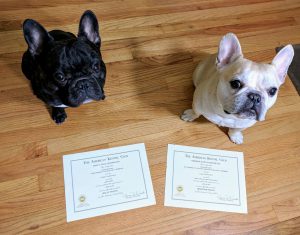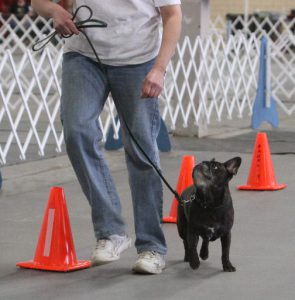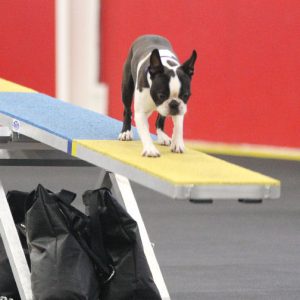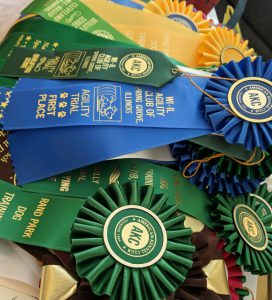If you’ve never been to a dog show – go! They’re lots of fun and you get to spend the entire day looking at gorgeous dogs, talking to dog people, shopping for dog stuff, and eating concession-stand food!
Dog shows are like little cities that set up suddenly on a Thursday night/Friday morning and disappear by Sunday afternoon. For a few days, it’s a loud, chaotic celebration of all things dog. The bigger the show, the bigger the mayhem.
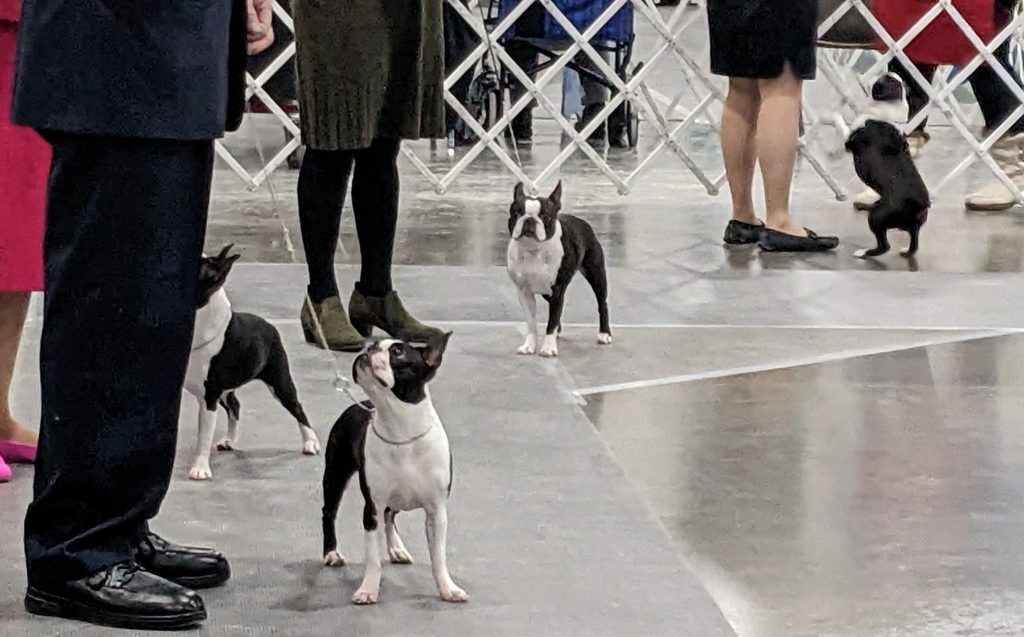
This week Hope is working as a helper at a set of dog shows in our area. It’s a huge fix for dog addicts like us. When we were little girls, our mother (also a dog lover) took us to the largest show in the area every year. Back then, the shows were unbelievably crowded, the dogs had to stick around all day (called a “benched” show), and the people were happy to talk to the public – as long as they weren’t due in the show ring anytime soon.
Deciphering a dog show
Trying to explain how conformation dog shows work can get just as complicated as trying to explain baseball or football to someone who’s never seen the sport. The intricacies are many and complex – even experienced dog people like us are sketchy on some of the rules.
Fortunately, you don’t need to know the complicated stuff to enjoy a show. And with the help of the internet, it gets even easier.
Find the dogs you love
You can get started by doing an internet search for “dog shows near me.” Or even go to the American Kennel Club website and do an “Event Search.” It’s easy to do – there’s a tab for “Sports & Events.” Then it gets a little more complicated. If you want to go to a “beauty pageant” that shows off every breed, you’re looking for “Conformation” shows. Just follow the prompts, choose the area you’re in, the dates you’re available, and find the name of a show. When you see one that looks like a possibility, click on the link for “Judging Program.”
That’s your guidebook to seeing the dogs you’re interested in. The Judging Program will tell you what time your breed is being judged, and what “Ring” the dogs will be competing in. Most shows welcome spectators, and most dog show people love to talk about their dogs. After they’re done showing and the competition is over.
While most dog show people want to win, most aren’t heartbroken if their dog wasn’t chosen that particular day. They’re happier if they win, but they usually take it in stride and will still be receptive if you approach them to say how much you admire their dogs.
The pros may or may not
That being said, there are quite a few professional handlers at dog shows these days. These are people who show lots of dogs for lots of people. And they usually have quite a few different breeds and tight schedules, getting the right dog into the right ring at the right time. So if you approach someone who’s a bit more stressed, or not willing to spend the time, don’t be offended. They’re just doing their jobs.
The amateur dog people, the ones who are showing their own dogs, are usually the ones standing around chatting in clumps before and after their ring time. Take a mental note, and approach a likely person after they come out of the ring – when they’re being congratulated or consoled for that day’s performance.
Dabble or dig in
You may find yourself fascinated by the whole atmosphere of dog shows. As Hope was watching the crowd outside the ring she was working at, the most wonderful part was the faces watching and delighted by the dogs. Particularly heartwarming was the group from a local group home for challenged teens. These kids loved dogs, and their interactions with both the dogs and the people brought smiles for everyone.
Another favorite part of dog shows for us is watching the Juniors. These are children, grouped by age, that are judged on their dog-handling abilities. The applause is always loudest at the Juniors ring.
If you’ve never been to a dog show – go! Don’t worry about understanding what’s going on. Just be there in time to see the dogs you care most about, and have fun!
Enjoyed this post? Click here to sign up for the weekly newsletter and never miss another!









